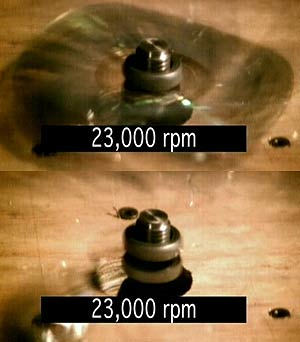For the first time I can recommend a plasma display that retails for less than $AUS5,000. For years I’ve been whining about the 852 x 480 pixel resolution of so-called ‘standard definition’ plasmas as being unsuitable for Australian, Indian and European viewers, since our standard definition PAL system uses 576 vertical pixels.
Now Samsung has lowered the prices on its high resolution plasma displays. The 42 inch (107cm) 1,024 by 768 pixel model, PS42P4H, now has a recommended retail price of $AUS4,999. It’s a pretty good set too. Here’s what I wrote about it last year in a mini-review for Rolling Stone magazine (when the RRP was $AUS7,999):
This plasma TV from Samsung features a common high resolution for 42 inch panels (this one measures 1,076mm diagonally): 1,024 pixels across by 768 down. The frame surrounding the display area is about as thin as it’s possible to get, making for a compact installation. It has a built-in analogue TV tuner and plenty of inputs. Two sets of component video for DVD player, plus composite video, S-Video, a computer video socket, and DVI for the best quality from DVD. Located on the side are convenient A/V inputs.The picture was excellent. Rich colours, good constrast ratio, no evident ‘burn-in’ and good handling of both video and film-sourced DVDs. But leave the Digital Natural Image engine (DNIe) switched off if you’re watching 4:3 movies. This circuit stretches the dynamic range of the picture for greater contrast, but also applies to the grey bars on the sides of the screen in this mode, making them pulse disconcertingly in brightness.
Samsung has also lowered the price on its 1,366 x 768 pixel 50 inch (127cm) model, the PS50P4H, to $7,999, or the same price that the 42 inch model was just six months ago.

 Since it started up on
Since it started up on